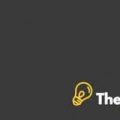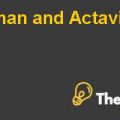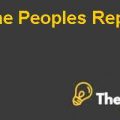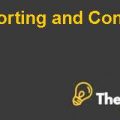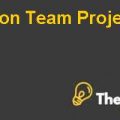
1. THREATS
The first threat faced by the company is from an international firm Net a firm which is being supported by its private equity firm. This increases the competition for JISL in the international market. There were also technological barriers being faced by the company. The demand for the company’s products is increasing.
The company is also exposed to losses in the future if the multinational customers such as Coca Cola, Unilever and Nestle adopted backward integration in future. Also the market for the recruitment of farmers was highly competitive. The company had also seen challenges in the development of human capital. The changes in the world’s climate and the demand of food in the international market at times impacted the business negatively. For example, if the temperatures were rising or the land was depleted and water resources could also impact the quality of the crops. Also, there was a risk that more players were going to enter in the market. The water and other resources will also become scarce in the future, therefore these companies will enter into the market to make money in the future.
FINANCIAL ANALYSIS AND RECOMMENDATIONS
The financial statement analysis for the company has been done in detail for the years 2009 and 2010. The important ratios have been calculated for the business. To assess the liquidity of the company current and quick ratio has been calculated. Since there is no inventory maintained by the business, therefore, both the businesses show same results. The current ratio is 1.37 in 2010 as compared to 1.26 in 2009. This means the company has enough short term cash to pay off all short term liabilities as they fall due. This shows the company has maintained the right working capital in the business. The working capital turnover ratio shows how the company is utilizing its working capital to generate sales. A very high working capital turnover ratio shows that the company does not have enough capital to finance its revenue. The company has a ratio of 0.12 in 2010 which is good working capital management.
The financial leverage of the company could be calculated by various formulas. Debt to equity is one of the methods. The company has the leverage ratio of 3.1 in 2010 which means that the company has used a lot of debt to finance its equity base. This means the company might have problem to meet debt obligations in the future. Also the return on assets, return on equity and the return on capital employed by the company are low with 0.13%, 0.41% and 0.23% respectively in 2010. This means the company is not generating good returns for the business. The asset turnover is also low and constant at 0.018 which means the company is not efficiently using its assets to generate sales for the business.
The equity multiplier is another leverage ratio, which shows that how much the company is financing its assets from the capital contributed by the shareholders. These are also high at 3.1 in 2010 which indicates the high usage of debts. This combined with the time interest earned ratio shows that the company is in difficulty to pay interest on its debt. This ratio is negative, which a very alarming situation is for the company. The gross profit margin shows that the company is managing its direct cost properly and has control over its costs. However the net profit margin is not satisfactory. (APPENDIX-A)
Based on the free cash flows generated by the business from 2005 to 2010 and the terminal value for the future period at the growth rate of 3% has been calculated. The firm value based on these cash flows discounted at the company cost of funds of 15% is 153.32 (APPENDIX-B). The company is recommended to manage its capital structure and also reduce the level of debt in the business. If this is not done, the firm might have a problem seeking loans and subsidies in the future, which will be required for the expansion of food processing.
It is also estimated that JISL’s workforce would increase to about 20,000 by the year 2017. Therefore, the business needs significant investments in the business in the area of human resource to recruit talented employees. Internships are one of the options through which JISL can identify which candidates are competent enough for the job. Also the company should take steps to establish a NBSF so that its receivables balance on the balance sheet is reduced and the interest on the subsidized loans is paid out from a short term loan taken by the farmers. The farmers would therefore take loans which would be equal to the amount of the subsidies..................................
This is just a sample partial case solution. Please place the order on the website to order your own originally done case solution.

